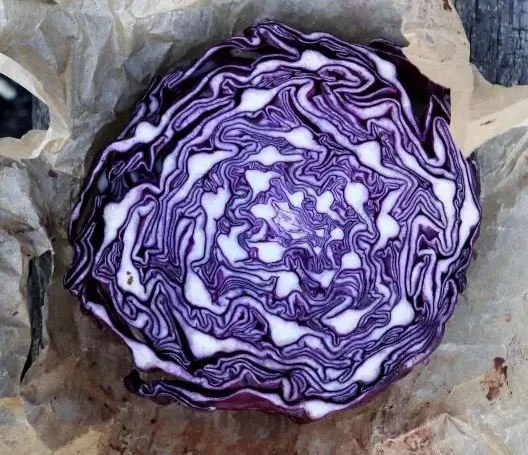All About Purple
While temperatures this week have been in the 60/40’s we’ve already had a few frosts, enough to nip the tender summer vegetables like tomatoes, peppers, and summer squash. In preparation for the purple season I’ve pulled out my favorite pair of insulated coveralls (purple, of course) for the chilly markets on the horizon but judging what went home in my market basket last week we’re well into purple season with the vegetables.
Although the seed packages refers to the vegetables as red, our eyes perceive many as purple. However, it is the same phytonutrients--lycopene and anthocyanin—which are responsible for colors. Darker colored vegetables contain more phytonutrients which in turn makes them a healthier choice. Unfortunately, according to the National Cancer Institute 95% of adults don’t get enough of these colored vegetables regularly in their diet. As a patron at Central Farm Markets you have no excuses since these vegetables are plentiful.
Let’s take a look at the benefits of eating purple.
The National Institute of Health (NIH) lists anthocyanins as having antidiabetic, anticancer, anti-inflammatory, antimicrobial, and anti-obesity properties. They are also accredited with preventing cardiovascular disease. I don’t know about you, but I’d rather eat fresh beets than take a pill.
Similarly, lycopene, also referred to as carotenoid, is related to beta-carotene. It is what makes a tomato red. Lycopene is a powerful antioxidant that helps to protect cells from cancer, atherosclerosis, cardiovascular disease, prostate cancer, human papillomavirus (HPV) infection, cataracts, asthma, and as an anti-inflammatory. Men, listen up. Eating your red vegetables can significantly increase your testosterone and reduce hair loss. And you thought Popeye was a boss for eating spinach.
Here are some of the purple vegetables showing up at the market to help put more color on your menu.
At the top of the list are beets, one of the most antioxidant rich vegetables. Beets are also a great source of potassium, fiber, folate, and vitamin C. Root vegetables can also lower blood pressure, improve circulation, and boost athletic endurance. There are red beets, golden beets, and my favorites, the Chioggia beets that look like bullseyes when you slice them.
Beets offer a lot of bang for your buck, too, when they come with their tops. Beet greens can be eaten both raw and cooked and are more nutritious than kale.
Speaking of kale, now that we’ve had a few frosts kales and other fall vegetables will become sweeter as the plants push sugars into the leaves which works as a natural antifreeze. There’s been several varieties of red and purple kales along with a colorful rainbow of chards. Can’t get your kids to eat cooked kale? Try making kale chips. They’re an easy, healthy snack.
My all-time favorite vegetable—kalettes—are back at the market and they, too, are various shades of purple.
We’re also back in cabbage season. Those gorgeous red cabbages as best eaten raw to get the most flavor and nutrients. Cabbage can be cooked, too, but to get the biggest boost out of it, fermented cabbage takes the prize. Red cabbage is packed with vitamins and minerals. A single cup has 85 percent of your daily requirement for vitamin C, 42 percent of vitamin K, and 20 percent of vitamin A. It’s also a great source of fiber, vitamin B6, potassium, and manganese.
Radicchio is yet another cool season vegetable back in stock. Some folks complain it’s too bitter to eat raw, but cut in half, drizzle with olive oil and grill to caramelize the natural sugars. A single cup of radicchio exceeds your daily dose of vitamin K and has folate, copper, manganese, and vitamins B6, C, and E.
Last week I brought home a purple sweet potato at the suggestion of one of my fellow vendors. “It’s purple the whole way through,” I was assured as I picked out a plump tuber from the box. Despite sweet potatoes of all colors having more sugar than plain white potatoes, they're actually considered “low” on the glycemic index scale. This means your blood sugar will rise more slowly, preventing a sharp spike and subsequent crash, making them the perfect energy food to start your day and carry you through. And if you really want to have some fun, try mashing them. Your kids will love them.
If sweet potatoes aren’t your thing, there’s also purple potatoes of the starchy variety.
So let’s shop purple and help keep ourselves healthy for the coming winter season.

